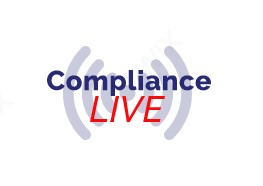In honor of David Prowse, the original actor portraying Darth Vader, I am running a podcast series this week on the intersection of compliance and Star Wars. Today, I consider at the only stand-alone entry in the Star War series, Rogue One. This movie tells the tale of the spies who stole the schematics from the original Death Star and transmitted it to Princess Leia and thereby the Rebel Alliance. Rogue One is the first film in the Star Wars Anthology series, a series of stand-alone spin-off films in the Star Wars franchise. It is not clear where the name of the movie came from; although my personal nomination is that in the attack led by Luke on the original Death Star, his squadron was Rogue Two so the movie title is a tribute to those Rebel Alliance X-wing fighters and their pilots. It informs the myth of the rogue employee.
As long as 25 years ago, Lynn S. Paine wrote about the myth of the rogue employee in the Harvard Business Review (HBR), in an article entitled “Managing for Organizational Integrity”. In this article she wrote, “executives are quick to describe any wrongdoing as an isolated incident, the work of a rogue employee. The thought that the company could bear any responsibility for an individual’s misdeeds never enters their minds. Ethics, after all, has nothing to do with management. In fact, ethics has everything to do with management.” How prescient she was in her article.
For it is management who sets the tone throughout the organization, whether that is something along the lines of a wink and a nod towards ethics and compliance or the more ubiquitous miss your numbers for two quarters and you will be history, Paine noted, “More typically, unethical business practice involves the tacit, if not explicit, cooperation of others and reflects the values, attitudes, beliefs, language, and behavioral patterns that define an organization’s operating culture. Ethics, then, is as much an organizational as a personal issue.”
However, a company’s responsibility is more than simply to set the right tone then sit back and do nothing. The drafters of the Foreign Corrupt Practices Act (FCPA) recognized this when they included the requirement for internal controls to be included in the law. For, as Paine said, “Managers who fail to provide proper leadership and to institute systems that facilitate ethical conduct share responsibility with those who conceive, execute, and knowingly benefit from corporate misdeeds.”
Yet the myth of the rogue employee is more than a simple myth. It is also a dangerous myth. It is dangerous because it excuses negligent or intentional corporate behavior. Mike Volkov, in a blog post entitled “The Myth of the Rogue Employee”, noted that illegal conduct such as that under the FCPA does not occur “in a vacuum.” He explained “There are other employees with whom the person interacts, there are financial controls in place to protect against such misconduct, there are reporting mechanisms for employees to report suspicious activity, and there is likely to be someone in the organization who is close enough to the bad actor, or responsible for the conduct of the bad actor, and who suspected or should have suspected that the actor was engaged in misconduct.” Moreover, the more sophisticated the scheme, the more actors are involved and the more controls are overridden or disregarded as he explained, “As the misconduct becomes more complicated, like in the case of bribery or antitrust violations, where such schemes require additional actors or raise red flags or where others are in a position to know or suspect that misconduct may have occurred”.
The three basic tenets of a best practices compliance program are to prevent, detect and remedy. By claiming employees who engage in bribery and corruption have ‘gone rogue’; companies are attempting to divest themselves of responsibility for actions from which they benefit, particularly if the bribery and corruption generated business sales and revenue.
Day: December 3, 2020

Amanda and Michelle welcome Paige to discuss the top 5 compliant gifts for business partners and top 5 compliant gifts for employees.
Check out more episodes and full episode videos at ComplianceLine.com, and subscribe on your favorite podcast platform!


Aaron Nicodemus is a staff writer and reporter at Compliance Week. He joins Vince Walden to discuss the recent report authored by COSO and to share new recommendations for managers and executives to manage compliance risks.
Internal audit professionals would be the compliance professionals most familiar with COSO, as they set the guidelines for Sarbanes-Oxley internal controls compliance. The report, titled “Compliance Risk Management: Applying the COSO ERM Framework,” was like a collaboration between accountants and attorneys, according to Vince.
Compliance should not be viewed as a low-level function, Aaron remarks. Rather, it should be viewed as a strategic partnership with a business to run their operations and initiatives according to the rulebook, in order to avoid missteps and minimize risk.
Resources
Aaron Nicodemus on LinkedIn | Twitter
ComplianceWeek.com
COSO report: Elevating compliance leads to more informed decision-making


